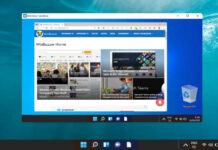1 How to Add a Windows Guest Account in Command Prompt2 How to Add a Guest Account in Local Users and Groups3 How to use Assigned access (Kiosk mode) in Windows 10
While you can’t enable the guest account from the Control Panel like you used to, there is a workaround. You can create a new guest account via Command Prompt or the Local User and Groups tool. A guest account brings some restrictions that are handy if you don’t trust the person using your PC. They will be unable to change settings, for example, install apps, or access your private files. What is kiosk mode/assigned access? Windows 10 kiosk, or assigned access, lets you limit a user’s use of your PC to a single app. This is often used for digital signs, self-service machines, or in libraries. You could, for example, allow your guest to only access the browser. We’ll dive into Kiosk in Windows 10 a bit later, but for now, let’s look at guest accounts:
How to Add a Windows Guest Account in Command Prompt
How to Add a Guest Account in Local Users and Groups
How to use Assigned access (Kiosk mode) in Windows 10
That wraps up this Windows 10 guest account and Assigned access tutorial. For further security, you may want to learn how to encrypt your folders and files or enable secure sign-in. You can switch out Visitor for any name you like if you’re creating multiple accounts. Remember to switch out “Visitor” for your username of choice if you chose something different in the previous step. There you have it. With a few simple commands, your guest account is all set up. Don’t forget to add a password if the account needs one.
























